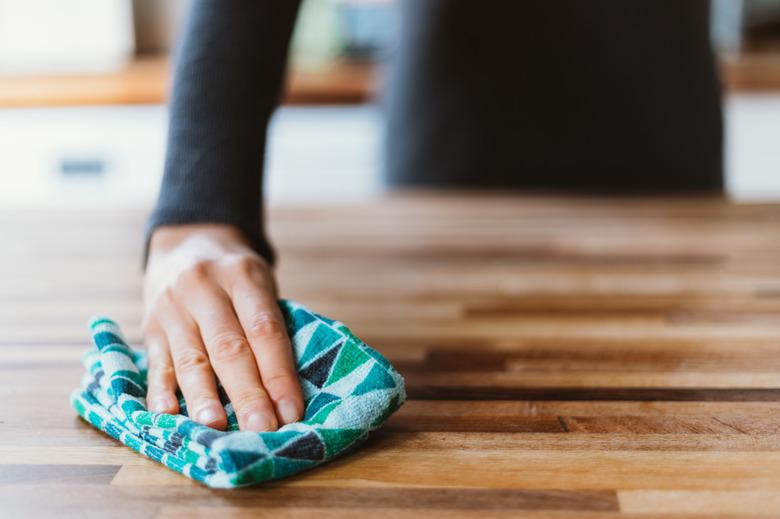How To Remove Sharpie From A Wood Table
We may receive a commission on purchases made from links.
The good thing about Sharpie ink is that it's permanent. The bad thing about Sharpie ink is that its permanence makes it somewhat difficult to remove from various surfaces, including wood tables. While soap and water work for washable marker ink, you'll need other substances, such as rubbing alcohol or a melamine foam eraser, to remove permanent marker ink.
Rubbing Alcohol for Removal of Sharpie Ink
Rubbing Alcohol for Removal of Sharpie Ink
Rubbing alcohol helps lift permanent marker inks from all sorts of surfaces, including wood. To remove Sharpie ink from a wood table, dip the tip of a cotton swab in rubbing alcohol, then trace the marker lines on the table with the wet swab. Follow up with a paper towel, wiping in the direction of the marker ink to help prevent spreading it from side to side.
For larger areas of Sharpie ink, pour some rubbing alcohol onto a white lint-free cloth. Avoid using a dyed dark cloth, just in case the dye seeps from the cloth to the wood. Blot the permanent marker stains with the wet cloth, lifting the cloth after a few seconds to see if any of the ink is on the cloth. If so, the alcohol is doing its job, and if not, blot it for a few seconds longer. Continue with fresh alcohol and a clean area of the cloth once the marker ink stains the cloth. Finish by rinsing the alcohol off with plain water and blot to dry.
If you don't have any rubbing alcohol handy, trace the marker stains with alcohol-based hand sanitizer or a dry-erase marker of a similar color, then immediately wipe the area with a lint-free white cloth. Sanitizer and Dry-erase markers contain a solvent similar to rubbing alcohol, so they're often able to lift Sharpie stains off hard, smooth surfaces. For any such product, test it first on an inconspicuous area if the table finish seems easily damaged by liquids.
Melamine Foam Erasers
Melamine Foam Erasers
Melamine foam erasers work like magic on all sorts of stains, scuffs, and spots, including Sharpie scribbles. Wet a corner of the melamine foam with water, squeezing out any excess moisture. Gently rub the marker stains with the foam, following the scribble lines as much as possible. The foam should lift the marker off the table. As with other products, test the foam eraser in an inconspicuous area of the table if you think it might mar the finish.
Baking Soda's Scrubbing Power
Baking Soda's Scrubbing Power
Baking soda is so gentle as an abrasive that it's used in some toothpastes. As a homemade baking-soda paste or in a toothpaste, it removes Sharpie ink from smooth surfaces such as wood furniture without harming the finish. Mix 1 tablespoon or so of baking soda with just enough water to make a paste. Use a lint-free white cloth to rub the paste into the marker stains. If using a baking-soda-based toothpaste, a small dab directly on the cloth does the trick, or apply more to the actual stains if the table is covered in scribbles.
Wipe the paste off the area from time to time to see if it has removed the ink. If so, wipe up all the paste and follow up with a damp white cloth to prevent any baking soda residue. If not, apply more baking soda paste or toothpaste and rub the spot a little harder. In some cases, following up with rubbing alcohol or a foam eraser helps remove anything the baking soda missed, and vice-versa.
